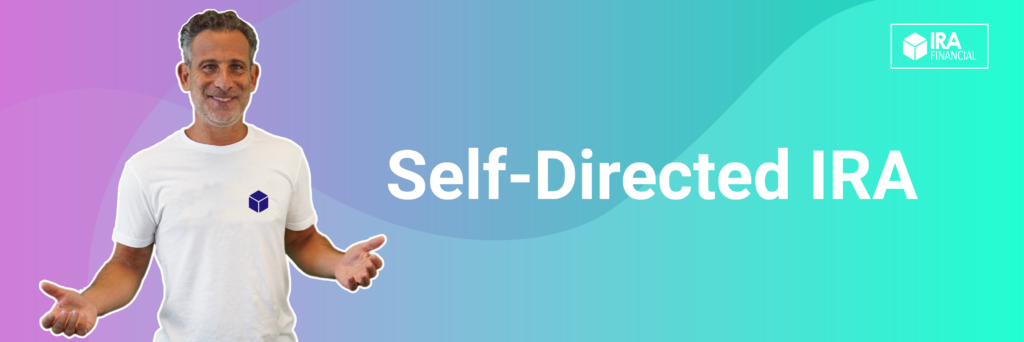In general, in order for a 401(k)-plan participant to move their 401(k) funds to a self-directed IRA, they would generally need to satisfy a plan triggering event. It is hard for many 401(k) plan participants to believe that they do not have unfettered control over their current employer 401(k) plan funds. In general, to rollover funds from a 401(k) plan to another retirement account one must generally be:
- Over the age of 59 ½
- Leave your job
- Plan is terminated
- Rolled funds into 401(k) plan
Reaching the Age of 59 ½
The most common way to get access to your 401(k) funds from a current employer is reaching the age of 591/2. Once you have reached the age of 59 ½, you will have the ability to take a distribution from the plan or do a tax-free rollover to a self-directed IRA. All direct rollovers to self-directed IRA are tax-free. There will be no withholding tax if you do a direct rollover to another retirement plan. However, once every 12 months you can do an indirect rollover. Any taxable indirect rollover distribution paid to you and not transferred directly to another retirement account from an employer-sponsored retirement plan is subject to a mandatory income tax withholding of 20%. The 20% withholding tax would apply even if you intended to roll it over later to another retirement plan (within 60 days). If you do roll it over and want to defer tax on the entire taxable portion, you’ll have to add funds from other sources equal to the amount withheld. Note – the 20% withholding tax does not apply to direct rollovers. Also, certain distributions from a 401(k) plan are not eligible for a rollover, such as a required minimum distribution or a hardship distribution,
Tips to consider before doing a 401(k) rollover:
- Direct rollover is the answer. Even if you want to pull money out of the plan, roll the funds directly into a self-directed IRA and then you can take a distribution without a 20% withholding tax. If under the age of 59 ½, tax and a 10% early distribution penalty would be due, but not payable until April 15 of the next year which gives you more use of the funds without tax.
- If you do an indirect rollover remember you can only do once every 12 months and you will likely be subject to a 20% withholding tax
- I you have less than $5000 in your 401(k) plan and you do not tell your employer what to do with the funds, many employer’s will roll your funds into a safe harbor IRA on your behalf which will earn very little return since it will be controlled by the IRA custodian. Hence, when you leave your job make sure to notify your employer that you wish to do a direct rollover to an IRA so you can control the IRA investments.
Other 401(k) Plan Triggering Events
Other than reaching the age of 59 ½, the other common ways of using 401(k) funds to fund a self-directed is leaving your employer. Once you terminate employment, you will gain access to the 401(k) plan funds. The timing for gaining access to your former employer 401(k) plan funds depends on the plan documents but could be immediately to up to 12 months. However, once you gain access to the former employer 401(k) plan funds, you can roll the funds tax-free to a self-directed IRA.
Another way one could get access to their 401(k) plan funds is if they rolled IRA or 401(k) funds into their employer 401(k) plan. In general, if you have rolled retirement funds into a 401(k) plan, you can roll those funds out to a self-directed IRA without a plan triggering event.
Why Go Self-Directed?
The most popular reason many 401(k) plan participants wish to establish a self-directed IRA is to gain greater investment options. Most 401(k) plan only allow their plan participants to invest in virus mutual funds and ETFs. In fact, many 401(k) plans do not even allow their plan participants to invest n individual stocks, such as Apple. Whereas, with a self-directed IRA, you can invest in all the same investment options offered in a 401(k) plan, plus individual stocks and alternative assets, such as real estate, private placements, investment funds, hard money loans, cryptos, precious metals, and much more. Hence, for investors seeking greater investment choices, diversification options, plus the ability to invest in hard assets as a hedge against inflation, the self-directed IRA is a great solution.
Conclusion
Most people are shocked when they lean that they do not have total control over their 401(k) plan funds like they would with an IRA unless they have a plan triggering event. For those who presently have a 401(k) plan with a current employer and are under the age of 59 ½, they will likely not have access to any of the 401(k) funds to fund a self-directed IRA. However, for those over the age of 59 ½, leaving their job, or have rolled funds into the 401(k) plan, they should have access to those funds to fund a self-directed IRA. You can always ask your employer human resource department or 401(k) plan administrator for more guidance on your situation since they will be in the best position to know the plan document details.








